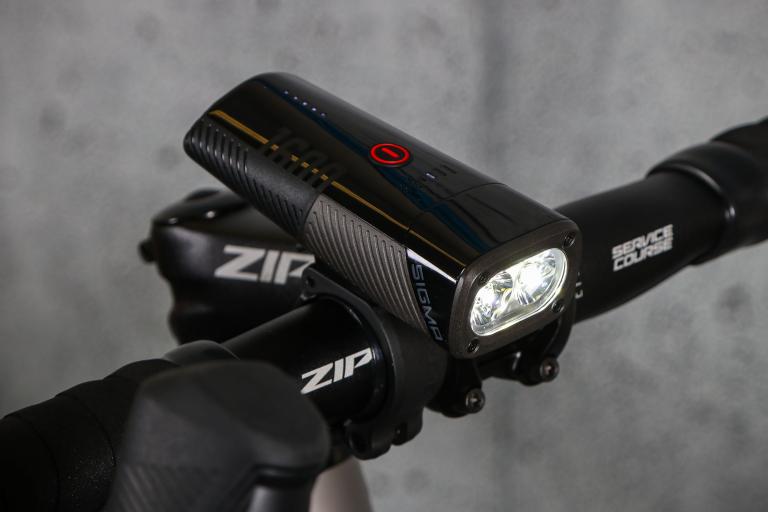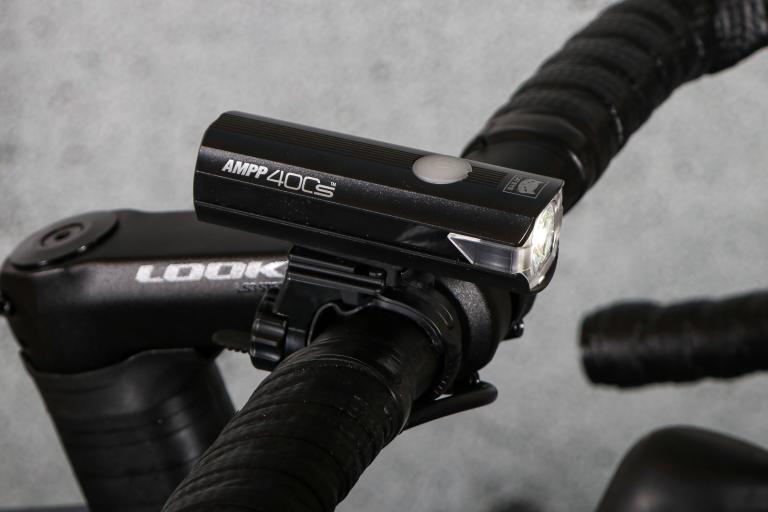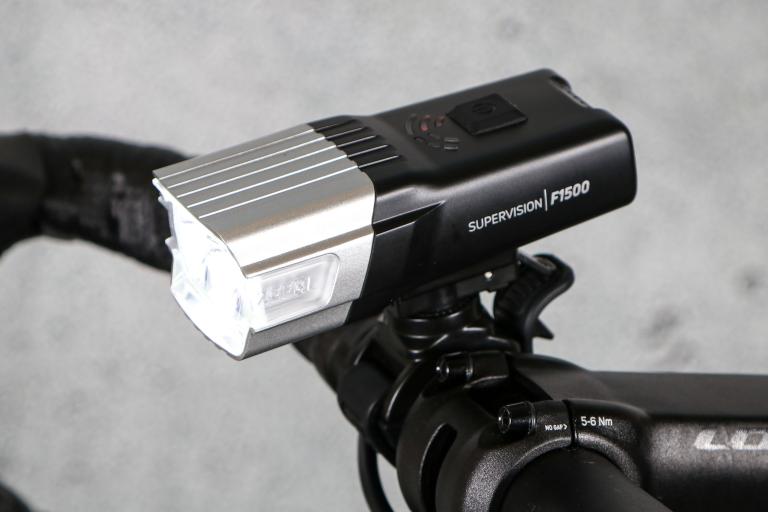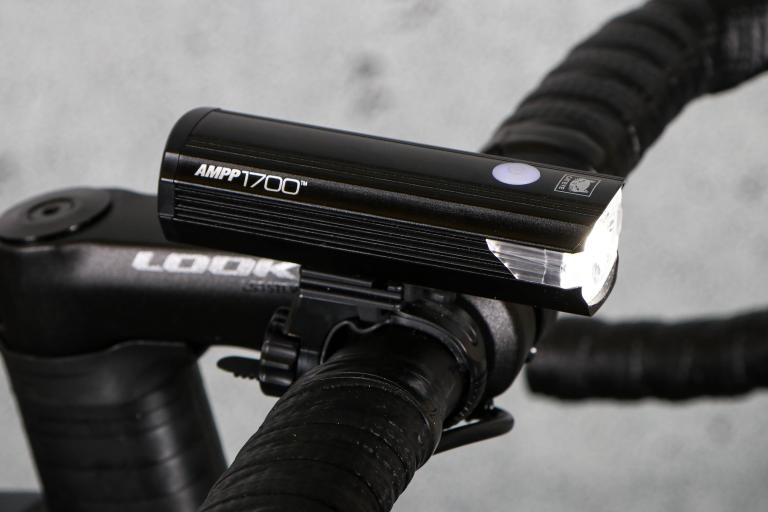- News
- Reviews
- Bikes
- Accessories
- Accessories - misc
- Computer mounts
- Bags
- Bar ends
- Bike bags & cases
- Bottle cages
- Bottles
- Cameras
- Car racks
- Child seats
- Computers
- Glasses
- GPS units
- Helmets
- Lights - front
- Lights - rear
- Lights - sets
- Locks
- Mirrors
- Mudguards
- Racks
- Pumps & CO2 inflators
- Puncture kits
- Reflectives
- Smart watches
- Stands and racks
- Trailers
- Clothing
- Components
- Bar tape & grips
- Bottom brackets
- Brake & gear cables
- Brake & STI levers
- Brake pads & spares
- Brakes
- Cassettes & freewheels
- Chains
- Chainsets & chainrings
- Derailleurs - front
- Derailleurs - rear
- Forks
- Gear levers & shifters
- Groupsets
- Handlebars & extensions
- Headsets
- Hubs
- Inner tubes
- Pedals
- Quick releases & skewers
- Saddles
- Seatposts
- Stems
- Wheels
- Tyres
- Health, fitness and nutrition
- Tools and workshop
- Miscellaneous
- Tubeless valves
- Buyers Guides
- Features
- Forum
- Recommends
- Podcast
review
 Electron F-400.jpg
Electron F-400.jpg£49.99
VERDICT:
Decent commuter light with enough punch for semi-rural riding
Weight:
117g
Contact:
At road.cc every product is thoroughly tested for as long as it takes to get a proper insight into how well it works. Our reviewers are experienced cyclists that we trust to be objective. While we strive to ensure that opinions expressed are backed up by facts, reviews are by their nature an informed opinion, not a definitive verdict. We don't intentionally try to break anything (except locks) but we do try to look for weak points in any design. The overall score is not just an average of the other scores: it reflects both a product's function and value – with value determined by how a product compares with items of similar spec, quality, and price.
What the road.cc scores meanGood scores are more common than bad, because fortunately good products are more common than bad.
- Exceptional
- Excellent
- Very Good
- Good
- Quite good
- Average
- Not so good
- Poor
- Bad
- Appalling
The Electron F-400 front light is described as a high performance 400-lumen light packed with features. Several weeks in and I'd call it a worthy commuter light for riders who want something with enough bite for moderate semi-rural/rural sections.
Superficially, save for the CNC machined aluminium lens cowling, it looks identical to its £24.99 F-150 sibling (review to come), from its rubberised switch with integral traffic-light charge indicator and matt graphics to the lozenge shaped amber windows. Composites seem a notch or so better, which is reassuring given the price differential.
> Find your nearest dealer here
It also comes with a better mount, which accommodated my Univega's beefy moustache bars more convincingly than the F-150's, but there's also a GoPro type should you prefer a cleaner look. Either way, both are reassuringly secure.
The F-400 uses a composite lens nut, single Cree diode and reflector. Given the weatherproof claims, I was quick to launch a sustained attack with the garden hose – nothing doing, so no surprise that it's sniggered at persistent rain.
By nature, lithium polymer cells are less susceptible to extremes of temperature and ours has remained consistently reliable, returning a full 3hrs 10mins in the maximum setting, 4:30 in low, 5:17 in pulsing, and well over 23 hours in flashing.
Recharging demands 2:15 at the mains, longer at the laptop. The charge indicator pulses red, flicking to green once fully juiced. I found the charge cable functional but so short as to be unusable in some situations. Thankfully, being an almost universal pattern, there's generally a substitute on hand if you're among friends.
The rubberised switch initially felt a bit vague compared to most these days but its positioning, coupled with the illuminated charge indicator, means it's a cinch to find and command from the saddle, regardless of glove type/density.
In use
Two rapid but definite presses bring it to life, and there are two 'cycles' available. In standard you get four modes: high (default initially, though it'll turn back on in the last mode used after that), with subsequent prods bringing on low, then pulsing, then flashing, which are 400 and 200 lumens apiece. The second cycle cuts out the flashing and pulsing modes, so you can just toggle between high and low – like main and dip beam on a car – which is handy when you're out on the open road in the dark and want to see where you're going without blinding oncoming traffic.
By my reckoning, the lower settings strike a sensible balance between output and economy for town and gloomy afternoons. That said, orbiting some sections of Coventry's notorious ring road, I felt a lot safer unleashing the full 400. Pulsing proved more effective in this context, given that I needed to stand out rather than navigate.
Beam projection to some extent compensates for the absence of a cutaway lens, but, while better than nothing, I'm not convinced the amber side windows add much presence when negotiating roundabouts and turning right.
I tend to think that 400 lumens is a bit weak for negotiating dark lanes – or at least requires a lot more concentration, even around 15-16mph – but output in this instance isn't bad. Picking out the detail was fairly easy, especially on clear nights. The spot-and-flood hybrid beam doesn't match higher end models – halos and 'bokeh' blunting my fun – but it's adequate for semi-rural work, up to a steady 18mph or those situations when you've given the best bike an airing and time has evaporated.
> Read our guide to the best front lights for cycling
Burn times are refreshingly good. Many of this type tend to conk out after 90 minutes or so. Electron reckons 3 hours in the highest setting; I've managed 10 minutes on top of this, although was initially perturbed when the battery indicator turned amber-40% after 30 minutes.
It was another 2 hours before slipping into red, though, when 16% meant 40 minutes' grace before I was plunged into darkness and limped home with a powerful blinkie. Low gives a moderate 4:30 – potentially a week's middle distance suburban commuting between charges.
Pulsing is arguably better. Once I'd become accustomed to the very brief dimming motion, I was still able to navigate semi-rural stretches at 16mph. The pulse also proved more useful when turning right, or entering the flow of traffic.
Finally, we have our old friend, flashing. Easily bright enough for daylight duties, it's a perky setting that friends reckon stood out from a good 250 metres along the back lane doubles, and 90-odd through town.
Generally speaking, Electron has the important things sussed, and settings ensure it's more usable than torch types capable of 600-odd lumens for an hour or so and long charge times in between. An automatic cut down would be a handy failsafe, even if it just defaulted to flashing, but otherwise, I've been pleasantly surprised by its versatility.
Verdict
Decent commuter light with enough punch for semi-rural riding
road.cc test report
Make and model: Electron F-400
Size tested: n/a
Tell us what the light is for, and who it's aimed at. What do the manufacturers say about it? How does that compare to your own feelings about it?
Electron says:
A high performance 400 lumen light packed with features
LED generates a broad beam with good depth
4 modes: High, low, flashing and pulse
Push-button waterproof switch, easy to operate even with winter gloves
Robust, water proof design, perfect for those wet winter nights
Convenient quick release handlebar mount supplied
Micro USB lead included
optional helmet mounting kit available aftermarket
I'd describe it as a versatile commuter plus model with decent run times and enough navigational power for semi-rural riding.
Tell us some more about the technical aspects of the light?
1 Cree 10w LED
PMMA lens
CNC machined anodized heat sink cowling
four modes
lithium polymer rechargeable battery
Rate the light for quality of construction:
7/10
Generally well made.
Rate the light for design and ease of use. How simple was the light to use?
8/10
Very intuitive to use, nice big switch is easily commanded mid-ride, wearing winter weight gloves.
Rate the light for the design and usability of the clamping system/s
7/10
Option of GoPro type mount is a nice touch and standard bracket compatible with really beefy bar diameters.
Rate the light for waterproofing. How did it stand up to the elements?
7/10
So far it has resisted persistent, wintry rain and provocative blasts from the garden hose with no problems. Two-year manufacturer guarantee against defects is also reassuring.
Rate the light for battery life. How long did it last? How long did it take to recharge?
6/10
Long charge times (5:30) redeemed by decent run-times overall: 23hrs 52mins flashing, 3:55 pulsing, 5:51 low.
Rate the light for performance:
7/10
Quality of output wasn't on par with some boasting similar numbers but has proven itself a good all-rounder.
Rate the light for durability:
7/10
Rate the light for weight:
7/10
Rate the light for value:
6/10
Tell us how the light performed overall when used for its designed purpose
The F-400 has a decent range of settings, which strike a sensible balance between output and economy. 3hrs 10 in the highest setting was pretty impressive from this genre and the switch's integrated battery life indicator gives easy reference. I was initially unnerved by the speed at which it went from green to amber, especially in the constant settings. However, it's proved surprisingly accurate and even red buys a decent amount of time, greatly reducing the likelihood of being plunged into darkness. That said, an automatic fail safe that defaulted to flashing once reserves hit a certain point would have been handy.
Tell us what you particularly liked about the light
Versatility, intuitive switches and genuinely practical modes.
Tell us what you particularly disliked about the light
Charge times are a little pedestrian, and might preclude zero to hero workplace refuelling.
Did you enjoy using the light? Yes
Would you consider buying the light? Possibly
Would you recommend the light to a friend? For commutes and training rides that take in some semi-rural sections, yes.
Use this box to explain your score
Overall a good torch type model for riders straying beyond the suburbs, but not everyone will be endeared to its relatively long charge times.
About the tester
Age: 43
I usually ride: Rough stuff tourer based around 4130 Univega mountain bike frameset My best bike is: 1955 Holdsworth Road Path and several others including cross & traditional road
I've been riding for: Over 20 years I ride: Most days I would class myself as: Experienced
I regularly do the following types of riding: cyclo-cross, commuting, touring, fixed/singlespeed, mountain biking
Shaun Audane is a freelance writer/product tester with over twenty-eight years riding experience, the last twelve (120,000 miles) spent putting bikes and kit through their paces for a variety of publications. Previous generations of his family worked at manufacturing's sharp end, thus Shaun can weld, has a sound understanding of frame building practice and a preference for steel or titanium framesets.
Citing Richard Ballantine and an Au pair as his earliest cycling influences, he is presently writing a cycling book with particular focus upon women, families and disabled audiences (Having been a registered care manager and coached children at Herne Hill Velodrome in earlier careers)




You forgot the tools/materials that they need for their job. (And couldn't possibly transport by cargo bike)
Any experienced London cyclist will tell you don't leave a £1K bike locked up especially in Shoreditch. This could all have been avoided. Having an...
Where did the e-bike doc go wrong? It got past the proposal stage...
Person trapped after campervan flips in Devon crash...
Not sure about those Torq Jellies, I tried something similar from a different brand and found them to be a bit too chewy.
My wife forgot to tell me about this and now the 48 hour deadline has passed. No ved either.
Thanks to all at road.cc HQ, I received my t-shirt, socks and stickers in the post this morning. Stickers are already being stuck:
The total cost of putting a complete bike on a UK showroom floor is considerably more complex than the Bank of England's inflation figures. Some...
"Around 200 cars" parked up along part of the Peak District have prevented gritting taking place....
There's plenty of traffic along Avonvale and Marsh Rd already without needing to encourage it.